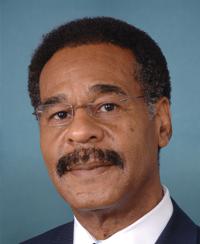H.R. 3009: Trees for Residential Energy and Economic Savings Act of 2025
The Trees for Residential Energy and Economic Savings Act of 2025
, commonly referred to as the TREES Act of 2025
, aims to establish a grant program to support tree planting initiatives that contribute to reducing energy consumption in residential areas. Below is a summary of the bill's key provisions:
Establishment of Grant Program
The bill mandates that within 90 days of its enactment, the Secretary of Energy must set up a program through which grants are awarded to eligible entities for tree planting projects that help lower residential energy use.
Consultation with Agriculture
In administering this grant program, the Secretary of Energy is required to consult with the Secretary of Agriculture, particularly through the Chief of the Forest Service.
Application Process
Eligible entities must submit specific applications to receive grants. These applications must include:
- A description of how the proposed tree planting will reduce energy consumption in residences.
- Estimates of the expected reduction in energy consumption from the project.
- A description of the costs involved in the project and potential other sources of funding.
- Plans for community involvement in the project.
- Information about the types of trees to be planted and their suitability for the local environment.
Grant Award Priorities
When awarding grants, the Secretary should prioritize projects that:
- Offer the greatest potential reduction in energy use for households experiencing high energy burdens.
- Provide significant shade or wind protection for residences exposed to high sun or wind intensity.
- Are situated in areas with limited tree canopy coverage.
- Serve neighborhoods with a high concentration of senior citizens or children.
- Are located in regions where the average annual income is below the median for that area.
- Involve collaborative engagement with community members affected by the tree planting.
- Employ a notable portion of local residents in the workforce for the tree-planting activities, focusing on those who are unemployed or underemployed.
Tree Planting Goals
The bill indicates goals to facilitate the planting of at least 300,000 trees annually, subject to available funding.
Funding and Cost Sharing
The federal government would cover 90% of the costs for projects funded by the grants. Additionally, the bill authorizes an appropriation of $50 million for each fiscal year from 2026 through 2030 to support this program.
Definitions
Key terms defined in the bill include:
Covered project:
Refers to a tree planting initiative aimed at reducing residential energy consumption.Eligible cost:
Includes costs related to project planning, tree purchase, site preparation, maintaining trees, and more.Eligible entity:
Can be state or local government entities, Indian tribes, nonprofit organizations, or retail power providers.Energy burden:
Refers to the percentage of a household's income spent on energy bills.
Relevant Companies
None found.
This is an AI-generated summary of the bill text. There may be mistakes.
Sponsors
5 bill sponsors
Actions
2 actions
| Date | Action |
|---|---|
| Apr. 24, 2025 | Introduced in House |
| Apr. 24, 2025 | Referred to the House Committee on Energy and Commerce. |
Corporate Lobbying
0 companies lobbying
None found.
* Note that there can be significant delays in lobbying disclosures, and our data may be incomplete.
Potentially Relevant Congressional Stock Trades
No relevant congressional stock trades found.




